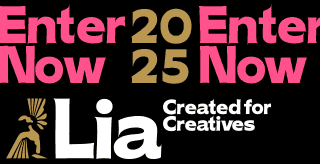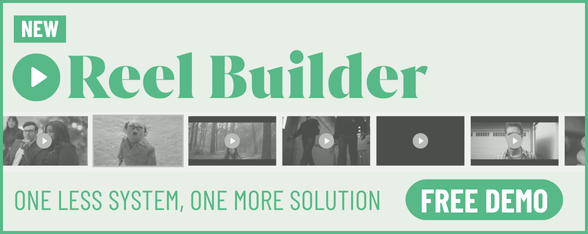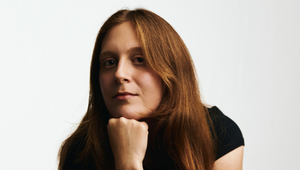
For Zhara Honoré the Key to Animation Is Clarity and Timing

Zhara Honoré is a CG animator from Trinidad & Tobago with a background in character animation and motion graphics. At Frame48, she brings a keen sense of movement and personality to both product, and character-driven projects, drawing on her years of experience in television, commercials, and films.
Her work blends technical precision with expressive storytelling, contributing to some of the studio’s most successful 3D animated campaigns.
Zhara sits down with LBB to chat about her latest work, approach to character animation design and creative heroes…
LBB> How did you fall in love with animation?
Zhara> My love for animation started when I was a kid, around five or six years old. I spent most of my time sitting in front of the TV, where I would try to draw the cartoon characters I was watching, making up my own little stories about them and drawing them in different scenes.
LBB> Tell us about the animation project that kickstarted your career?
Zhara> It’s probably my thesis film, which I made with two friends during my senior year of college. Looking back, there are plenty of things I would do differently, and we joke about remaking it all the time. But it was my first real collaboration on a CG project and the longest project I had worked on at that point. Many of the shots even ended up in my first reel.
LBB> How would you describe your style and what are your biggest inspirations that developed it?
Zhara> I wouldn’t say I have one specific style when it comes to animation. My background is in character animation, and I’ve worked on a wide range of projects, from characters that needed to seamlessly blend into live action to fully 3D creations.
Over the past couple of years at Frame48, I’ve focused mainly on product animation, though we still work with characters. I draw a lot of inspiration from other animators and studios and often study their work to bring fresh ideas into my own. I’m always seeking out new CG art to reference and learn from.
LBB> From your perspective, what’s the key to animation that really lives?
Zhara> For me, the key to animation is a combination of clarity and timing. Having a clear idea of what you want the performance to look like and why, as well as having those actions play out in a way that hits the right beats at the right moments. This means making sure the audience has enough time to see, react to, and process each action, while also giving every beat its own moment to stand out. It’s about being able to think about the micro details of the performance and the overall story at the same time.
LBB> Show us your favourite or most impactful project that you’ve worked on – tell us, what is it that makes it special and what were the memorable moments or challenges?
Zhara> One of my favourites is definitely the Lenovo Yoga Pro 9i commercial we worked on recently. It was one of our most character-driven projects, and the first time I fully animated a character in Houdini instead of Maya. Our entire animation team was learning a lot about the Houdini pipeline, and the project ended up laying important groundwork for our character animation process moving forward.
What made it especially memorable was the level of creative control we had as a team. We were able to pull in references we might not usually get the chance to explore, like anime fight scenes and Hollywood-style action sequences. It became a really fun deep dive into body mechanics and movement.
LBB> How do you approach character animation? What is your creative process like? Show us some of your favourite characters and their journey from notepad to screen.
Zhara> My approach to character animation starts with understanding who the character is. What’s their personality like? Who do they remind me of? Once I have that in mind, I’ll film reference footage of myself acting out their movements. This helps guide both the performance and the mechanics of the animation, making sure it all feels authentic and true to the character.
This was the process when it came to conceptualising 24Carrot, the rapper bunny character from our Lenovo Yoga Pro 7 commercial. We knew we wanted him to be reminiscent of a rapper from 90s and early 2000s hip hop videos, so I spent a lot of time watching old Hype Williams music videos for inspiration on how he should interact with the camera. I also directly referenced a dance from an old Snoop Dogg video for some of his moves.
LBB> Tell us more about observation and movement – what is the process you go through to study the movement of characters?
Zhara> When I’m studying movement of characters I tend to look for little idiosyncrasies that really bring their movement to life.
Good arcs and timing are the basis of good animation but what are unique and specific little actions that really define the character?
Is the character courageous and bold, and therefore, they exude confidence with larger-than-life movements?
Or are they more timid and unsure of themself so their actions are more reserved?
LBB> How does one figure out what kind of animation style or styles fits a particular story or project?
Zhara> I think the style of animation is driven by the overall story you’re trying to tell. Consider the feeling you want to evoke or who the character is. Is the story meant to be playful and whimsical, where we use super bouncy and loose animation? Or is the tone more serious and subdued, calling for animation that’s more calculated and sleek? This is usually part of a larger creative conversation with the rest of the team, where we look at references that align with the idea we’re trying to convey.
LBB> What is your favourite piece of technology or software that you use and how does it help your creative process?
Zhara> My favourite software to work in is Houdini. I originally learned animation in Maya, but I’ve recently shifted all of my animation work into the new program. It’s transformed my creative process by making it incredibly easy to get ideas out quickly.
As a procedural, node-based software, Houdini lets me animate many elements at once while keeping everything flexible. If I need to make changes to something I set up early on, for example, if I did an animation on a sphere but decided I wanted it to be a cube instead, it’s simple to go back and adjust without redoing the pre-existing animation. This workflow has become my go-to for bringing ideas to life in 3D quickly and efficiently.
LBB> What sort of briefs or projects do you find more personally satisfying to work on?
Zhara> I enjoy projects where I can try something new, whether it’s experimenting with a different animation style or tackling unique technical challenges. I’ve been using Houdini for the past few months, and while I’ve learned a lot, it’s such a dense software that there’s always more to discover.
One project that stands out is a children's show, ‘Bedtime Stories’, one of my first at Frame48. It was animated and rendered to look like stop-motion, which was a fun and rewarding challenge, especially when working with adorable stuffed animals.
LBB> What recent projects have really stood out for you and why?
Zhara> I’d say the recent set of Lazer helmet spots really stood out to me. It was the first time I personally worked on the initial creative from conceptualisation, spending a couple of days brainstorming the overall ideas and story for each model. It felt like I was exercising a part of my brain that I don’t always get to use at that level. That’s something I really appreciate about working at Frame48 – it’s a hands-on environment where we all get to collaborate across different parts of the pipeline.
LBB> Who is your animation hero and what is it about their work that inspires you? What example of their work particularly stands out?
Zhara> I have so many but off the top of my head, Alberto Mielgo, Robert Valley and Genndy Tartakovsky. I love the graphic nature of their work and the way they are able to bring that into animation. They’re not afraid to really push the boundaries of animation to where every frame looks like an illustration and I really admire that.
LBB> Outside of the field of animation, what really inspires you?
Zhara> Nature, travel, and film are my biggest sources of inspiration. I think there’s so much art in the world around us, from the natural environment to the details of different cultures and architecture.
Film is another constant source of ideas for me, especially since a big part of my job involves animating cameras. I’m always paying attention to how filmmakers move their cameras in the real world, and I often draw on those techniques to bring a more cinematic feel to my 3D work.
LBB> What do you think are the misconceptions about animation throughout the industry?
Zhara> I think many people don’t realise just how much time and effort goes into animation. There’s a misconception that 3D animation is either the same as 2D or traditional illustration, where every frame is hand-drawn, or that it’s more like coding or software engineering, with the focus solely on the technical side. In reality, it’s a blend of both, and requires creative vision and storytelling alongside deep technical knowledge to bring a project to life.
LBB> What are the biggest changes to animation and challenges facing animators at the moment and what are your thoughts on them?
Zhara> In my opinion, the biggest change and challenge to animation right now is the rise of generative AI. It poses a real risk of artists losing jobs, and I think the work loses value when it’s mass-produced by computers trained on tonnes of images, regurgitating everything they’ve learned.
I can see a future where artists use AI as a tool to support and enhance the creative process. My concern is that decisions about how AI is implemented are often made by large corporations, which don't prioritise the needs or perspectives of the artists.
LBB> Any advice you would like to give to aspiring artists?
Zhara> Keep creating, keep learning and keep making things that you like. I think creativity is a muscle and you need to keep exercising it. Also, don’t be afraid to try new things! Explore different parts of the pipeline or different types of art and creative expression. You’d be surprised how much it helps you better your own craft.















